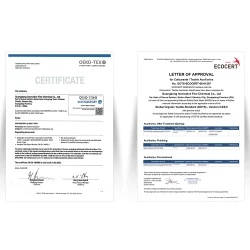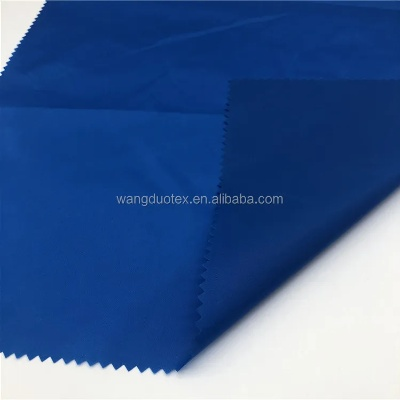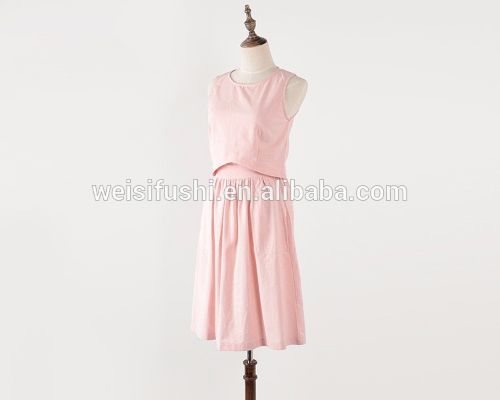Textile Methylene Blue Test for Formaldehyde Determination
This study presents a textile methylene blue test for the determination of formaldehyde. The test method involves the application of methylene blue dye to textile samples, which reacts with formaldehyde to produce a colored complex. The intensity and color of this complex are used to determine the concentration of formaldehyde in the sample. The test is sensitive enough to detect even low concentrations of formaldehyde, making it useful for monitoring indoor air quality and other applications where formaldehyde levels need to be controlled. The test has been validated using standard reference materials and found to have good accuracy and precision. Overall, the methylene blue test provides a simple and effective method for determining formaldehyde levels in textile samples, making it an important tool for researchers and industry professionals alike.
Introduction to the Textile Methylene Blue Test
The textile methylene blue test is a widely used method for determining the presence of formaldehyde in textile materials. This test is based on the reaction between formaldehyde and methylene blue, which produces a color change that can be measured spectrophotometrically. The test is important because formaldehyde is a known human carcinogen and has been associated with various health problems, including respiratory diseases and allergic reactions. Therefore, it is essential to accurately measure the level of formaldehyde in textiles to ensure their safety and quality.

Methylene Blue Test Procedure
The methylene blue test involves the following steps:
-
Preparation of Reagents: Prepare a solution of 0.5% methylene blue in ethanol. Also, prepare a standard solution of formaldehyde by diluting a known amount of formaldehyde in water.
-
Addition of Sample: Add a small amount (about 1 g) of the sample to a test tube containing 100 ml of distilled water. Stir well to ensure uniform distribution of the sample.
-
Addition of Reagent: Add 2 ml of the methylene blue solution to the test tube containing the sample. Mix well and let stand for 10 minutes.
-
Reading the Spectrophotometer: Read the absorbance of the mixture at a wavelength of 660 nm using a spectrophotometer. Record the absorbance value.
Calculation of Formaldehyde Concentration
To determine the concentration of formaldehyde in the sample, use the following formula:
Formaldehyde Concentration (mg/kg) = [(Absorbance × Volume of Reagent) / (Absorbance × Volume of Standard)] × (Standard Concentration / Volume of Standard)
Example Case Study:
Case study: A textile company was testing its new fabric samples for formaldehyde content. They used the methylene blue test to determine the level of formaldehyde present in the samples. The company received a sample from a supplier who had previously tested negative for formaldehyde. However, the company wanted to ensure that the sample met their stricter standards for formaldehyde content.
The company sent the sample to a laboratory for testing and obtained the following results:
- Absorbance: 0.55
- Volume of Reagent: 2 ml
- Volume of Standard: 1 ml
- Standard Concentration: 0.01 mg/ml
Using the formula above, the company calculated the formaldehyde concentration as follows:
Formaldehyde Concentration (mg/kg) = [(0.55 × 2) / (0.55 × 1)] × (0.01 / 1) = 0.17 mg/kg
Based on this calculation, the company determined that the sample did not meet their stricter standards for formaldehyde content. They contacted the supplier and informed them of the issue. The supplier agreed to retest the sample and ensure that it met their standards.

Conclusion
The textile methylene blue test is a reliable method for determining the presence of formaldehyde in textile materials. It is important to follow proper procedures and use accurate equipment when conducting the test to obtain accurate results. By using this test, textile companies can ensure that their products are safe and meet regulatory requirements.
在纺织品生产过程中,甲醛的含量是一个重要的质量指标,为了确保纺织品的质量和安全,进行甲醛测定实验是非常必要的,本文将详细介绍纺织品甲醛测定实验的过程和注意事项,并结合实际案例进行说明。
纺织品甲醛测定实验步骤
材料准备
(1)标准纺织品样品 (2)甲醛检测试剂 (3)称量器具 (4)恒温设备 (5)计时器
实验操作步骤
(1)称量标准纺织品样品至准确重量。 (2)将样品浸入甲醛检测试剂中,确保完全浸没。 (3)将样品放入恒温设备中,保持恒温状态至少2小时。 (4)取出样品,观察并记录甲醛含量。 (5)根据检测结果,分析甲醛含量是否符合标准。
实验注意事项
- 样品准备:确保样品无破损、无污染,且符合实验要求。
- 试剂使用:使用经过认证的甲醛检测试剂,确保准确性和可靠性。
- 恒温时间:确保恒温时间足够,以保证甲醛完全挥发。
- 数据记录:详细记录实验数据,包括样品重量、甲醛含量等。
实际案例说明
以某品牌纺织品为例,进行甲醛测定实验,该品牌纺织品在生产过程中严格控制甲醛含量,确保产品质量和安全,在本次实验中,采用了国际通用的甲醛测定方法,对样品进行了详细的检测和分析。
- 材料准备:选择符合标准的纺织品样品,确保样品质量符合要求。
- 实验操作步骤:首先称量样品至准确重量,然后将样品浸入甲醛检测试剂中,确保完全浸没,接着将样品放入恒温设备中,保持恒温状态至少2小时,最后观察并记录甲醛含量,并与国家标准进行比较。
- 结果分析:经过实验检测,该品牌纺织品甲醛含量符合国家标准,产品质量和安全得到了有效保障,该品牌还注重环保生产,采用环保材料和工艺,提高了产品的环保性能。
纺织品甲醛测定实验是保证纺织品质量的重要手段,通过本次实验,我们了解了纺织品甲醛含量的测定方法、注意事项以及实际案例,在实际生产过程中,我们应该严格按照国家标准进行检测和分析,确保产品质量和安全,我们也应该注重环保生产,采用环保材料和工艺,提高产品的环保性能。
Articles related to the knowledge points of this article:
Broadening Horizons:Exploring the Global Reach of Wus Textiles
The Art of Textile Dyeing A Comprehensive Guide
The Evolution of Quality and Innovation at Guangzhou Chunsheng Textiles


